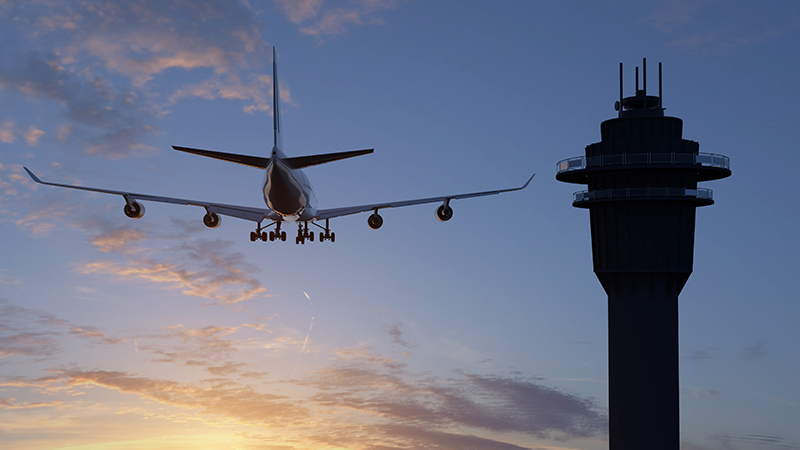

In a recent post, we covered how technology is changing the face of aircraft through unmanned systems and AI integration. However, it’s worth considering how these systems will interact with a vital (yet often under-discussed) part of flight technology: air traffic control.
So, let’s do exactly that. How is air traffic control changing, and what role will technology play in its future?
Air traffic control is a complex system that already relies on a lot of technology. It typically involves an interaction between an aircraft’s pilot and a ground station, which monitors and organises various aircraft safely through their journeys. But unsurprisingly, this will be slightly harder with unmanned aircraft.
There are two possible solutions to this. The first is the growing trend of automation in air traffic control, as this would be ideal for unmanned systems. Automating their interactions with a ground station means the human element can be removed completely, allowing the two systems to communicate seamlessly.
In theory, automation will rely heavily on AI, which is already making itself known in air traffic control. Canadian-based company Searidge has developed an AI platform that enhances the decisions of a human traffic controller, although the logic can be applied to automated systems in the future.
Of course, it would be unreasonable to assume that all air traffic control will be automated in the future. The level of complexity in some systems means that a human element will always be necessary. But this means we must look at ways to improve the efficiency and accuracy of manned systems.
One such technology is Automatic Dependent Surveillance-Broadcast (ADS-B), a satellite network for air traffic control. Whereas older systems use radar and ground antennas, ADS-B will use satellites to track aircraft and provide accurate real-time information to traffic control.
Using satellites means controllers can plan more efficient routes and help aircraft avoid congested airspace. It also means weather-related decisions can be more accurate, helping aircraft to avoid delays and as much turbulence as possible. The overall goal is to improve safety and efficiency, which has already been demonstrated in Europe and North America.
Back on the ground, augmented reality has the potential to make air traffic controllers’ jobs much easier. NASA is developing a system that will overlay flight data on real-world images, although it’s designing its technology for drone systems and Advanced Air Mobility.
However, the theory is equally applicable to commercial air traffic control. Augmented reality could serve two major purposes in a traffic control tower. The first is to improve visibility in bad weather or at night. Using a digital overlay, controllers could identify and direct aircraft without actually being able to see them.
The second is to reduce head-down time, which is the time an operator spends not looking at their primary visual field (e.g., the actual runway). An AR headset would allow a traffic controller to look at their primary visual field and secondary tools (such as radar, satellite imagery, etc.) at the same time. In short, it could massively improve efficiency and decision-making potential.
It should come as no surprise that technology is changing the way air traffic control works. After all, it’s always been a tech-heavy field and an industry that welcomes any way to improve efficiency and safety. We’re currently in a period of potentially major industry overhaul, so it’ll be interesting to see what air traffic control looks like in another 10 or 20 years.
